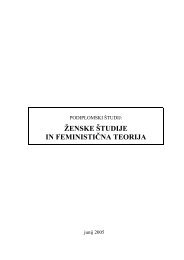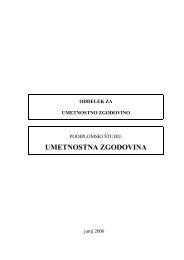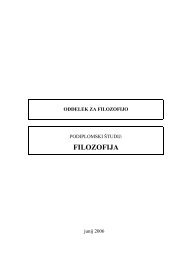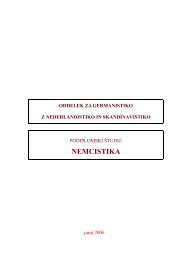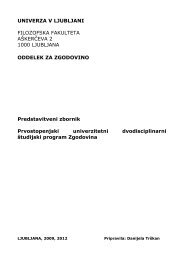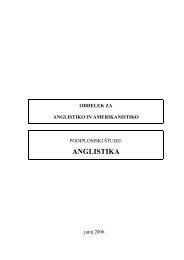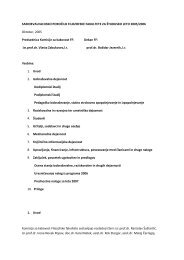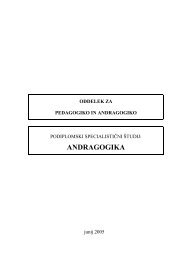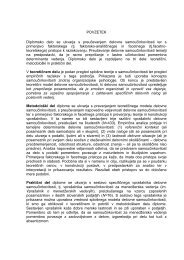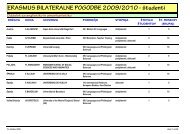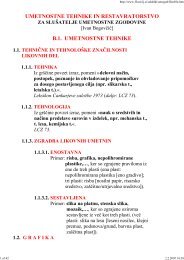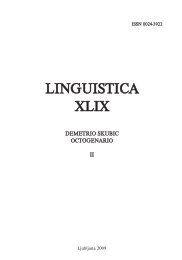B_solo_zgibanke male new_1 - Filozofska fakulteta
B_solo_zgibanke male new_1 - Filozofska fakulteta
B_solo_zgibanke male new_1 - Filozofska fakulteta
Create successful ePaper yourself
Turn your PDF publications into a flip-book with our unique Google optimized e-Paper software.
Silvana Orel kos UDk 811.111'366.58:811.163.6'366.58<br />
University of Ljubljana*<br />
a CONtRaStive-StyLiStiC StUDy iNtO tHe teNSe<br />
DiStRiBUtiON iN eNGLiSH aND SLOveNe FiCtiONaL textS<br />
iNtRODUCtiON<br />
the article addresses contrastive and narratological issues of the unity vs. diversity of<br />
temporal spheres in fictional texts. it focuses on the presentation of mimetic<br />
discourse within the past time-sphere narrative, trying to establish the narrative or<br />
stylistic functions of the present and past time-sphere verb actions with respect to the<br />
role of the narrator or that of the character. the diegetic and mimetic functions of<br />
verb actions in certain temporal spheres, ie. tense usage in (free) indirect discourse<br />
(free) direct discourse, will be contrastively studied in original fictional texts and their<br />
translations, in both directions between english and Slovene. the character’s<br />
mimetic discourse may be presented through different narrative forms, spanning the<br />
report-control cline from the forms “in total control” of the character, ie. free direct<br />
discourse, to that “apparently in total control” of the narrator, ie. speech act and<br />
thought act report (cf. Leech and Short 1981: 324). in addition to the character’s<br />
verbal and mental responses, the study includes mediated instances of the character’s<br />
sensory responses, the basic formula thus being: He said that/thought that/saw that ...<br />
Our contrastive analysis considers only fictional texts whose diegesis is rendered<br />
in the narrative past tenses, as the english language system observes the sequence<br />
of tenses, while the Slovene language does not. the diegesis of a fictional text may<br />
be completely located in the present time-sphere, yet such texts do not present any<br />
major issues in terms of contrastive relevance for the studied language pair.<br />
For the purpose of this study we have established four types of fictional<br />
temporal spheres:<br />
a. diegetic past-time sphere in the narrator’s total or partial control, including<br />
narrative reports of physical actions and states, ie. mental and sensory<br />
perception, as well as forms of indirect discourse (underlined items in the<br />
examples);<br />
b. diegetic present-time sphere in the narrator’s total or partial control,<br />
including narrative reports of physical actions and states, ie. mental and<br />
sensory perception, as well as forms of indirect discourse (undulated items<br />
in the examples);<br />
c. mimetic present-time sphere in the character’s partial or total control,<br />
including forms of indirect and direct discourse, as well as free direct<br />
discourse (bold items in the examples);<br />
* author's address: <strong>Filozofska</strong> <strong>fakulteta</strong>, Oddelek za prevajalstvo, aškerčeva 2, 1000 Ljubljana, Slovenia.<br />
email: silvana.orel@Uni-Lj.si<br />
227



